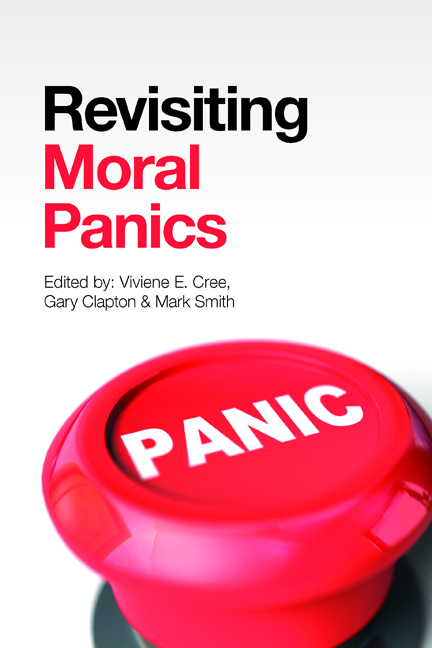Book contents
- Frontmatter
- Contents
- Contributors
- Preface
- Commentary moral panics yesterday, today and tomorrow
- Part One Gender and the family
- Part Two Moral panics in our time? Childhood and youth
- Part Three The state, government and citizens
- Part Four Moral crusades, moral regulation and morality
- Afterword the moral in moral panics
- Conclusion Moral panics and beyond
- Index
Seven - Unearthing melodrama: moral panic theory and the enduring characterisation of child trafficking
Published online by Cambridge University Press: 08 March 2022
- Frontmatter
- Contents
- Contributors
- Preface
- Commentary moral panics yesterday, today and tomorrow
- Part One Gender and the family
- Part Two Moral panics in our time? Childhood and youth
- Part Three The state, government and citizens
- Part Four Moral crusades, moral regulation and morality
- Afterword the moral in moral panics
- Conclusion Moral panics and beyond
- Index
Summary
Introduction
The issue of child trafficking came to prominence in the early part of the 21st century as international migrations of children became more visible in the UK, attracting the attention of non-governmental organisations (NGOs), politicians and the national news media. The trafficking of children is not a new phenomenon; in the late 19th century campaigners were successful in lobbying for an increase in the age of consent, partially as a result of the media exposé of the ‘white slave trade’ orchestrated by the newspaper editor William Stead (Bristow, 1978). The phenomenon of child trafficking has also been previously characterised as a moral panic (Goode and Ben- Yehuda, 1994; Cree et al, 2012). Moral panic writings go some way towards explaining the conditions that provide fertile ground for the amplification of risk that is embedded in media representations and policy discourses associated with child trafficking. This chapter will illustrate how the issue of child trafficking continues to be defined, drawing on a model developed from the literary genre of melodrama. The chapter discusses the features of a moral-panic perspective that are relevant to understanding the construction of child trafficking.
What makes this a moral panic?
Moral-panics thinking was originally used to explain the crisis in policing of young people (Cohen, 1972) and has been applied to many social issues in the intervening period (Goode and Ben-Yehuda, 1994; Critcher, 2003). Thompson (1998) identifies a number of common features of a moral panic: there is a campaign or a crusade over a period of time; the issues appeal to those who are concerned in some way about social breakdown; there is a lack of clarity in moral guidelines; politicians and the media are found to be at the head of public debates; and, finally, the real causes of the problems that give rise to a moral panic remain unaddressed. Factors of central importance in understanding an issue as a moral panic are that concerns about behaviour are met with increasing hostility and the issue becomes publicly visible. The issue is represented in disproportionate terms, in that the groups who push social concerns up the political and public agenda do so by constructing the issue as good versus evil and heighten sensitivity by focusing on the worst-case scenario as if it were representative (Thompson, 1998).
- Type
- Chapter
- Information
- Revisiting Moral Panics , pp. 83 - 92Publisher: Bristol University PressPrint publication year: 2015

